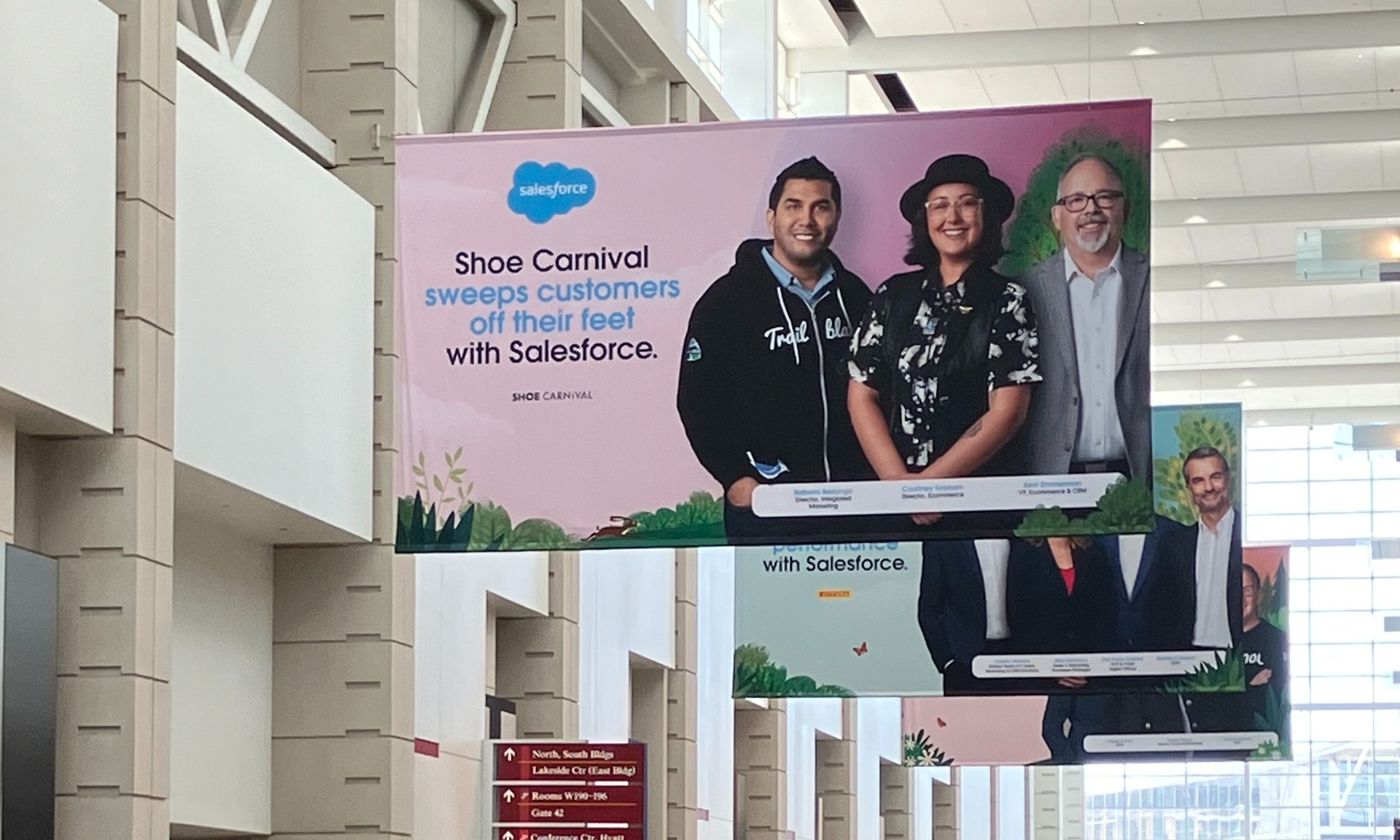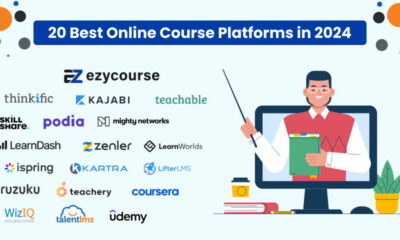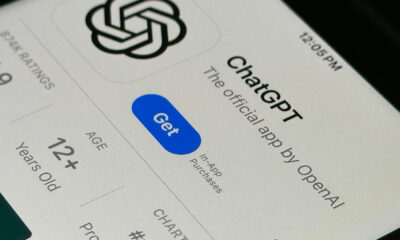MARKETING
Clubhouse vs. Twitter Spaces (+ How Other Audio Platforms Match Up)

When a new social media app goes viral, you can almost guarantee that at least one of the social tech giants will test a similar, competitive feature.
A couple of months after Clubhouse’s launch, Twitter announced Twitter Spaces, a feature limited to accounts with 600+ followers.
Today, both platforms have greatly expanded. And, each time this happens, marketers wonder, “Which of these social media channels should I use in my strategy? And, is this trend even worth investing in?”
The good news? Strong competition around a social media trend, like chat streaming, signals that it’s not going away anytime soon and might be worth investing in. So, the only thing you’ll need to figure out is where to experiment with the trend.
Below, I’ll give you a breakdown of Clubhouse’s biggest competitors as well as some marketing takeaways to help you determine which platform is right for your brand.
Need to brush up on your Clubhouse knowledge before diving in? Check out this post for a recap of what Clubhouse is and why competitors are trying to get in on the action.
Clubhouse Vs. Twitter Spaces
According to HubSpot Blog Research, 44% of marketers plan to leverage live audio chat rooms for the first time on social media in 2022.
The research also suggests that marketers are more interested in Twitter Spaces than in Clubhouse. In fact, it’s the number one emerging social media platform brands invested in this year and marketers say they’ll invest more in that audio platform than Clubhouse.
Meanwhile, 15% of marketers plan to decrease their Clubhouse investment in 2022.
So how does Twitter Spaces match up to Clubhouse? Let’s get into it.
Twitter Spaces was softly rolled out to a small group of beta testers in late December and fully launched in May of 2021.
The Spaces experiment was announced late last year following the success of audio apps like Clubhouse. At that time, Twitter Product Lead, Kayvon Beykpour told TechCrunch, “We think that audio is definitely having a resurgence right now across many digital spaces. … It’ll be fascinating to see how other platforms explore the area as well, but we think it’s a critical one for us, too.”
The feature, which closely resembles Clubhouse Rooms, originally only allowed users with over 600 followers to host a space. Today, the tool is open to all Twitter users regardless of follower count and features prominently on the app as a center tab.
How Twitter Spaces Works
To create a Space, the first thing you must do is click on the center tab icon on the Twitter app. From there, you can scroll through all the conversations happening on the platform.

Once you find a Space you’re interested in, you simply click on it and select “Start Listening.” From there, you can navigate anywhere on the app as you listen and even leave the app while the Space continues.

If one of your followers is hosting a Space, you will see that at the top of your timeline.

Twitter Spaces also allows you to:
- Add captions for accessibility.
- Engage with speakers through emoji reactions.
- Share the Space via Tweet, DM, or link.
- Add up cohosts and speakers.
- Share relevant tweets in the Space.
- Record the Space and share it with audience later on.
In addition, you can preschedule Spaces and prompt audience to set reminders for the event.
At the moment, those who launch a Space can invite up to 10 hand-picked speakers. From there, they can adjust who speaks based on who raises their hand and which speakers need to leave early.
When entering the Space, the UX is similar to Clubhouse in that you can see who’s speaking and who created the Space before seeing a list of other listeners. You’ll also see a down arrow at the top that allows you to minimize, but continue listening to the chat, as well as a “Leave,” request to speak, share, and heart icon – allowing you to signal that you enjoy the discussion.
Like Clubhouse, users will be muted as they enter the room and will need to get speaking privileges from the Space moderator if they’d like to say something
Takeaways for Marketers
While both platforms offer many of the same features, Twitter Spaces has a wider reach.
The platform has over 200 million monetizable daily active users, compared to Clubhouse’s reported 4.9 million daily active users.
In addition, Twitter already has an established platform that offers a timeline, an explore page, and many other tools beyond its audio feature. For brands, this means that you can accomplish many goals on the same platform.
With this in mind, Spaces could also be a natural transition for brands aiming to build a community. At this point, people are already using Twitter to respond to text-based threads and tweets related to their interests, industry, beliefs, and passions.
Now, they can vocally share their thoughts in Spaces without worrying about character limits. This could further engage Twitter’s community-centered audience while also helping brands take community marketing to the next level.
Clubhouse is another community-building platform that is more niche and may work better for brands that already have a strong presence on other social networks.
Clubhouse’s Other Competitors
Instagram Live Rooms
Shortly after Facebook’s CEO and Co-Founder Mark Zuckerberg spoke in a Clubhouse room, the social media company was reportedly experimenting with a similar audio feature. While we’re still not certain if and when Facebook will launch a competing feature yet, its company, Instagram, is expanding its Live feature to add chat rooms.
What makes Instagram Live Rooms significantly different from Clubhouse or Spaces is that it streams full video chats rather than audio discussions.

Before March, Instagram Live allowed two Instagram users (one broadcaster and one guest) to stream their video call for public audiences or followers. For viewers, this experience was like watching two people video call without being able to participate.
Now, Instagram has upped the guest capacity of these rooms from one to three.
A March 1 announcement from Instagram explained, “In the past year, special moments have happened on Live, including informational talks about science and COVID-19 guidelines, interviews with celebrities, and record-breaking rap battles.”
“Creators of all kinds — from fitness instructors to musicians, beauty bloggers, chefs, and activists, all relied on Live to create moments and bring people together to reach their communities in creative ways. We can’t wait to see what more creativity comes from this highly-requested update.”
“We hope that doubling up on Live will open up more creative opportunities — start a talk show, host a jam session or co-create with other artists, host more engaging Q&As or tutorials with your following, or just hang out with more of your friends,” the Instagram statement added.
How to Instagram Live Rooms Will Work
At the moment, the Live Rooms feature is still rolling out, but the brand says it will soon be available to global Instagram users.
When Live Rooms is fully implemented, any user can tap their Stories icon, swipe left to the Live setting, choose a title or foundation to promote in their stream. Then, they can tap the “Rooms” icon and pick guests to be in their broadcast. Viewers will also be able to request to join rooms that are already in progress, as shown below:

Takeaways for Marketers
While Live Rooms could be an interesting prospect for brands that already have a following there, they do seem to have some limitations.
For example, Twitter Spaces and Clubhouse allow more than five guests while Live Rooms only allows three additional guests. This might make it harder to take questions or comments from audience members who’d like to add to the conversation.
Another factor that could be a pro or con depending on the brand considering it is the visual nature of Live Rooms. Because speakers must appear on camera, some brands will have more opportunities to show products or visuals. Meanwhile, other brands looking for a more open dialogue will need to find only speakers comfortable with appearing on video.
One solid feature that could make Instagram Live Rooms more competitive for brands is Instagram Shopping. In 2020, Instagram added new shopping features that allow brands to share links to products in live streams that can be purchased directly on Instagram. According to Instagram’s announcement, these features will be available in Live Rooms so brands could begin to monetize their live chats.
Facebook and LinkedIn’s Clubhouse Rivals
At this point, Facebook’s Clubhouse alternative is still in the very early stages of development while LinkedIn’s was confirmed in late March. At this point, there aren’t many details on what LinkedIn or Facebook’s final audio platforms could look like when they launch. However, reports hint that they’ll both have a very similar audio-only user experience to Clubhouse.
For example, here’s a look at the audio chat UX LinkedIn is testing, as reported by TechCrunch:

Suzi Owens, a LinkedIn spokesperson, confirmed that LinkedIn is testing a new audio feature with the UX shown above.
“We’re doing some early tests to create a unique audio experience connected to your professional identity,” Owens said. “And, we’re looking at how we can bring audio to other parts of LinkedIn such as events and groups, to give our members even more ways to connect to their community.”
When it comes to Facebook, not much has been publicly announced about its feature. However, TechCrunch reported back in May that the feature could be part of the Facebook Messenger app. Here’s a very early mockup of the feature, which was recently leaked on Twitter:

While Facebook confirms that the mockup above was part of its “exploratory” process, the tech company told TechCrunch that the image doesn’t accurately depict the finalized version of the feature.
Takeaways for Marketers
At this point, marketers should keep these options on their radar and be ready to consider these alternatives if they do launch.
While Clubhouse users that love to network and discuss their industry might transition well to LinkedIn’s version, Facebook’s pure size could mean that their in-app audio chat experiences could get more listeners than you’d find on Clubhouse.
Which audio social media platform should marketers use?
Like we saw with Stories and short-form music video features, every social media platform wants to take advantage of audio social media trends. Because each version is pretty similar to all the others, you might be wondering which channel you should invest in.
At the moment, the jury is still out on which platform will be the most successful for the longest, especially since Twitter and Instagram’s features aren’t fully launched yet. However, when all the social media competitors implement their new features, you’ll want to consider a few factors to determine which is right for you, such as:
- Potential reach: While Twitter and Instagram have the biggest audiences by far, Clubhouse is quickly growing. If this app were to launch an Android version soon, it could potentially burst in growth due to its current buzz and popularity.
- Your following: Do you already have a large following on one platform that has a chat streaming feature? If so, you might want to start there before investing time into another app where you have no audience.
- Media formats: Clubhouse and Twitter’s chat streams are designed to be audio-only, while Instagram Live Rooms will show video. If you prefer staying off-camera, you might want to avoid one of the apps that requires your camera.
- Miscellaneous features: While Clubhouse enables users to make clubs – or groups of users with similar interests, Instagram enables brands to place Instagram Shopping CTAs in their Live streams. While you’re exploring each platform, take note of the smaller features that differentiate them in case one of these tools could help your brand.
Want to learn more about the latest social media trends and expert insights? Download HubSpot’s 2021 Social Media Trends Report for free below.
Editor’s Note: This post was originally published in June 2021 and has been updated for comprehensiveness.
MARKETING
YouTube Ad Specs, Sizes, and Examples [2024 Update]
![YouTube Ad Specs, Sizes, and Examples [2024 Update] YouTube Ad Specs, Sizes, and Examples](https://articles.entireweb.com/wp-content/uploads/2024/06/YouTube-Ad-Specs-Sizes-and-Examples.jpg)
Introduction
With billions of users each month, YouTube is the world’s second largest search engine and top website for video content. This makes it a great place for advertising. To succeed, advertisers need to follow the correct YouTube ad specifications. These rules help your ad reach more viewers, increasing the chance of gaining new customers and boosting brand awareness.
Types of YouTube Ads
Video Ads
- Description: These play before, during, or after a YouTube video on computers or mobile devices.
- Types:
- In-stream ads: Can be skippable or non-skippable.
- Bumper ads: Non-skippable, short ads that play before, during, or after a video.
Display Ads
- Description: These appear in different spots on YouTube and usually use text or static images.
- Note: YouTube does not support display image ads directly on its app, but these can be targeted to YouTube.com through Google Display Network (GDN).
Companion Banners
- Description: Appears to the right of the YouTube player on desktop.
- Requirement: Must be purchased alongside In-stream ads, Bumper ads, or In-feed ads.
In-feed Ads
- Description: Resemble videos with images, headlines, and text. They link to a public or unlisted YouTube video.
Outstream Ads
- Description: Mobile-only video ads that play outside of YouTube, on websites and apps within the Google video partner network.
Masthead Ads
- Description: Premium, high-visibility banner ads displayed at the top of the YouTube homepage for both desktop and mobile users.
YouTube Ad Specs by Type
Skippable In-stream Video Ads
- Placement: Before, during, or after a YouTube video.
- Resolution:
- Horizontal: 1920 x 1080px
- Vertical: 1080 x 1920px
- Square: 1080 x 1080px
- Aspect Ratio:
- Horizontal: 16:9
- Vertical: 9:16
- Square: 1:1
- Length:
- Awareness: 15-20 seconds
- Consideration: 2-3 minutes
- Action: 15-20 seconds
Non-skippable In-stream Video Ads
- Description: Must be watched completely before the main video.
- Length: 15 seconds (or 20 seconds in certain markets).
- Resolution:
- Horizontal: 1920 x 1080px
- Vertical: 1080 x 1920px
- Square: 1080 x 1080px
- Aspect Ratio:
- Horizontal: 16:9
- Vertical: 9:16
- Square: 1:1
Bumper Ads
- Length: Maximum 6 seconds.
- File Format: MP4, Quicktime, AVI, ASF, Windows Media, or MPEG.
- Resolution:
- Horizontal: 640 x 360px
- Vertical: 480 x 360px
In-feed Ads
- Description: Show alongside YouTube content, like search results or the Home feed.
- Resolution:
- Horizontal: 1920 x 1080px
- Vertical: 1080 x 1920px
- Square: 1080 x 1080px
- Aspect Ratio:
- Horizontal: 16:9
- Square: 1:1
- Length:
- Awareness: 15-20 seconds
- Consideration: 2-3 minutes
- Headline/Description:
- Headline: Up to 2 lines, 40 characters per line
- Description: Up to 2 lines, 35 characters per line
Display Ads
- Description: Static images or animated media that appear on YouTube next to video suggestions, in search results, or on the homepage.
- Image Size: 300×60 pixels.
- File Type: GIF, JPG, PNG.
- File Size: Max 150KB.
- Max Animation Length: 30 seconds.
Outstream Ads
- Description: Mobile-only video ads that appear on websites and apps within the Google video partner network, not on YouTube itself.
- Logo Specs:
- Square: 1:1 (200 x 200px).
- File Type: JPG, GIF, PNG.
- Max Size: 200KB.
Masthead Ads
- Description: High-visibility ads at the top of the YouTube homepage.
- Resolution: 1920 x 1080 or higher.
- File Type: JPG or PNG (without transparency).
Conclusion
YouTube offers a variety of ad formats to reach audiences effectively in 2024. Whether you want to build brand awareness, drive conversions, or target specific demographics, YouTube provides a dynamic platform for your advertising needs. Always follow Google’s advertising policies and the technical ad specs to ensure your ads perform their best. Ready to start using YouTube ads? Contact us today to get started!
MARKETING
Why We Are Always ‘Clicking to Buy’, According to Psychologists

Amazon pillows.
MARKETING
A deeper dive into data, personalization and Copilots

Salesforce launched a collection of new, generative AI-related products at Connections in Chicago this week. They included new Einstein Copilots for marketers and merchants and Einstein Personalization.
To better understand, not only the potential impact of the new products, but the evolving Salesforce architecture, we sat down with Bobby Jania, CMO, Marketing Cloud.
Dig deeper: Salesforce piles on the Einstein Copilots
Salesforce’s evolving architecture
It’s hard to deny that Salesforce likes coming up with new names for platforms and products (what happened to Customer 360?) and this can sometimes make the observer wonder if something is brand new, or old but with a brand new name. In particular, what exactly is Einstein 1 and how is it related to Salesforce Data Cloud?
“Data Cloud is built on the Einstein 1 platform,” Jania explained. “The Einstein 1 platform is our entire Salesforce platform and that includes products like Sales Cloud, Service Cloud — that it includes the original idea of Salesforce not just being in the cloud, but being multi-tenancy.”
Data Cloud — not an acquisition, of course — was built natively on that platform. It was the first product built on Hyperforce, Salesforce’s new cloud infrastructure architecture. “Since Data Cloud was on what we now call the Einstein 1 platform from Day One, it has always natively connected to, and been able to read anything in Sales Cloud, Service Cloud [and so on]. On top of that, we can now bring in, not only structured but unstructured data.”
That’s a significant progression from the position, several years ago, when Salesforce had stitched together a platform around various acquisitions (ExactTarget, for example) that didn’t necessarily talk to each other.
“At times, what we would do is have a kind of behind-the-scenes flow where data from one product could be moved into another product,” said Jania, “but in many of those cases the data would then be in both, whereas now the data is in Data Cloud. Tableau will run natively off Data Cloud; Commerce Cloud, Service Cloud, Marketing Cloud — they’re all going to the same operational customer profile.” They’re not copying the data from Data Cloud, Jania confirmed.
Another thing to know is tit’s possible for Salesforce customers to import their own datasets into Data Cloud. “We wanted to create a federated data model,” said Jania. “If you’re using Snowflake, for example, we more or less virtually sit on your data lake. The value we add is that we will look at all your data and help you form these operational customer profiles.”
Let’s learn more about Einstein Copilot
“Copilot means that I have an assistant with me in the tool where I need to be working that contextually knows what I am trying to do and helps me at every step of the process,” Jania said.
For marketers, this might begin with a campaign brief developed with Copilot’s assistance, the identification of an audience based on the brief, and then the development of email or other content. “What’s really cool is the idea of Einstein Studio where our customers will create actions [for Copilot] that we hadn’t even thought about.”
Here’s a key insight (back to nomenclature). We reported on Copilot for markets, Copilot for merchants, Copilot for shoppers. It turns out, however, that there is just one Copilot, Einstein Copilot, and these are use cases. “There’s just one Copilot, we just add these for a little clarity; we’re going to talk about marketing use cases, about shoppers’ use cases. These are actions for the marketing use cases we built out of the box; you can build your own.”
It’s surely going to take a little time for marketers to learn to work easily with Copilot. “There’s always time for adoption,” Jania agreed. “What is directly connected with this is, this is my ninth Connections and this one has the most hands-on training that I’ve seen since 2014 — and a lot of that is getting people using Data Cloud, using these tools rather than just being given a demo.”
What’s new about Einstein Personalization
Salesforce Einstein has been around since 2016 and many of the use cases seem to have involved personalization in various forms. What’s new?
“Einstein Personalization is a real-time decision engine and it’s going to choose next-best-action, next-best-offer. What is new is that it’s a service now that runs natively on top of Data Cloud.” A lot of real-time decision engines need their own set of data that might actually be a subset of data. “Einstein Personalization is going to look holistically at a customer and recommend a next-best-action that could be natively surfaced in Service Cloud, Sales Cloud or Marketing Cloud.”
Finally, trust
One feature of the presentations at Connections was the reassurance that, although public LLMs like ChatGPT could be selected for application to customer data, none of that data would be retained by the LLMs. Is this just a matter of written agreements? No, not just that, said Jania.
“In the Einstein Trust Layer, all of the data, when it connects to an LLM, runs through our gateway. If there was a prompt that had personally identifiable information — a credit card number, an email address — at a mimum, all that is stripped out. The LLMs do not store the output; we store the output for auditing back in Salesforce. Any output that comes back through our gateway is logged in our system; it runs through a toxicity model; and only at the end do we put PII data back into the answer. There are real pieces beyond a handshake that this data is safe.”


![Clubhouse vs. Twitter Spaces (+ How Other Audio Platforms Match Up) Download Now: Social Media Trends in 2022 [Free Report]](https://articles.entireweb.com/wp-content/uploads/2022/01/Are-Brands-Investing-in-Social-Media-Communities-in-2022-We.png)













You must be logged in to post a comment Login